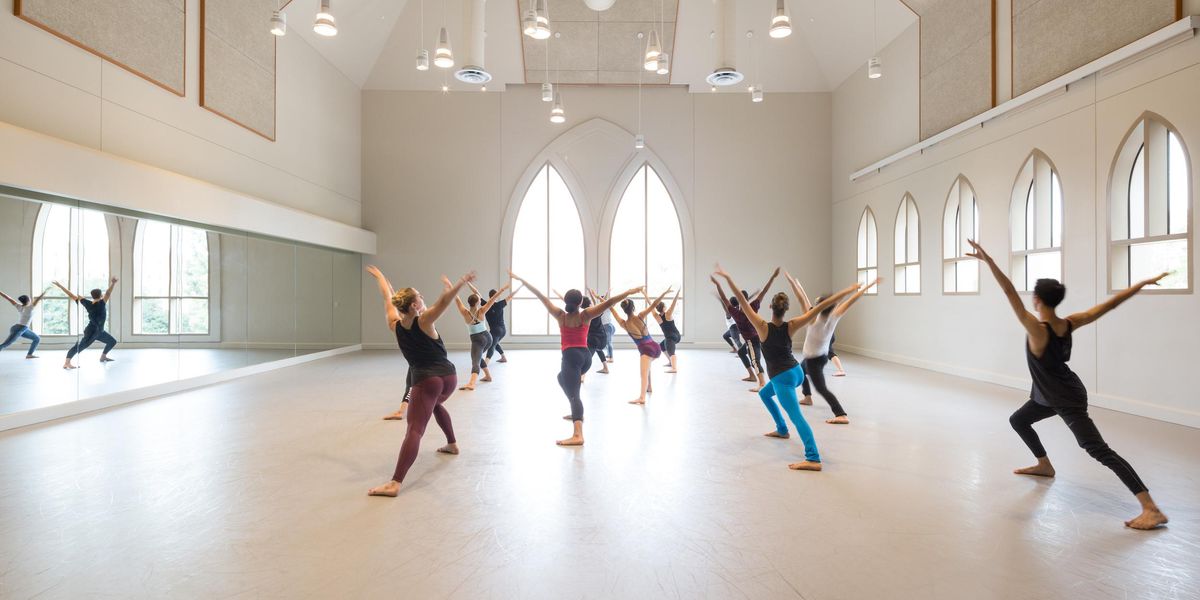Advice for Dancers: Start Gaining Strength
Weight-lifting tips for dancers, plus how to worry less and beat post-performance letdown
I’m tired of looking like a skinny teenager who’s too weak to partner women. How can I buff up?
—Rob, Queens, NY
While muscle size is determined by your genes, you can make vast improvements to your physique if you use a smart approach. First, be aware that it takes roughly 3,500 extra calories over the course of a week to gain a pound. Yet for healthy adults, gaining this amount may cause excess food to be stored as fat. Eating more than normal also works against your genetic set point for weight. When you overeat, you lose your appetite. (Think of how stuffed you feel after eating a big Thanksgiving dinner.) The key is to ease into it. First, keep a three-day food diary to get a baseline of your current daily caloric intake. A registered dietitian can use this to help you develop a sensible food plan. Then increase the amount by 300 calories, and maintain that daily intake for a week. The next week, add 300 more. As you repeat the process, your weight should slowly increase. The plan’s goal is to gain half a pound per week.
At the same time, you need to follow a special weight-training program by going to the gym under appropriate supervision. Muscle gain requires that you fatigue as many muscle fibers as possible. According to New York City Ballet medical team member Dr. Lawrence E. DeMann, Jr., if your starting point for lifting weights is 50 pounds, it should start to feel hard by the 10th repetition. Add another 10 pounds for the next set. You should now be struggling to do 8 reps. By the time you lift 70 pounds, you may only be able to do 5 or 6 repetitions. Your muscles will grow and get stronger in response to this form of stress. The third component is to add sprinting three days a week for 20 minutes, alternating 30 seconds of pushing to your absolute limit in any workout (like swimming) with 90 seconds where you stop and rest. Sprinting releases human growth hormone, increasing lean muscle mass. Mission accomplished.
All my life I’ve been a chronic worrier over silly things, like whether I’ll do a rehearsal perfectly the first time. I know it’s normal to make mistakes when you’re learning new choreography, but once I start worrying I can’t stop. Do you have any suggestions?
—Ashley, Santa Monica, CA
Worrying is a form of excessive problem-solving. Still, that’s little consolation if it causes serious anxiety. You might consider cognitive-behavioral therapy to deal with perfectionism and unrealistically high standards. (Your health insurance program or state psychological association can provide a referral.) Meanwhile, here are three easy techniques to cope. You can try 1) thought-stopping, where you say “no” to yourself when you begin to worry and redirect your attention to something constructive, like learning new steps; 2) reframing rehearsal nerves as being excited and ready to go; or 3) scheduling a daily worry time, where you obsess about everything that might go wrong for only 15 minutes until tomorrow at the same time. Frequently, dancers will forget their worry time and have to wait a whole day before they can do it again. How refreshing!
Why does dancing feel so good? Nothing compares to the feeling I have onstage, and I actually get depressed when the season ends. I dread taking a break. Am I pathetic?
—High on Dance, Pittsburgh, PA
Absolutely not! Most dancers are drawn to this art form because they excel at kinesthetic intelligence, one of several different types of intelligence that all people share to varying degrees. According to the theory of multiple intelligences, movement plays a significant role in how you interact with the world and express yourself. Another form of IQ is musical intelligence. Put them together and you have dance. Like most forms of exercise, dancing releases powerful chemicals called endorphins that increase your sense of well being. As you’ve noticed while dancing, they are an especially effective mood booster. To help ward off depression during your break, now would be a good time to discover other interests and friends on your day off. You can also plan to take easy dance classes after your body recovers from a busy season. Apart from the natural high and intrinsic satisfaction of dancing, you’ll feel connected to others in the community. This will help keep you from withdrawing and getting depressed. Of course, if you need additional help, please contact the Depression and Bipolar Support Alliance (dbsalliance.org).
Dr. Linda Hamilton
2000 Broadway, PH2C, New York, NY 10023
e-mail: [email protected]
Former New York City Ballet dancer Linda Hamilton, Ph.D., is a psychologist in private practice, the author of Advice for Dancers (Jossey-Bass) and co-author of The Dancer’s Way: The New York City Ballet Guide to Mind, Body, and Nutrition (St. Martin’s Griffin). Her website is drlindahamilton.com.




